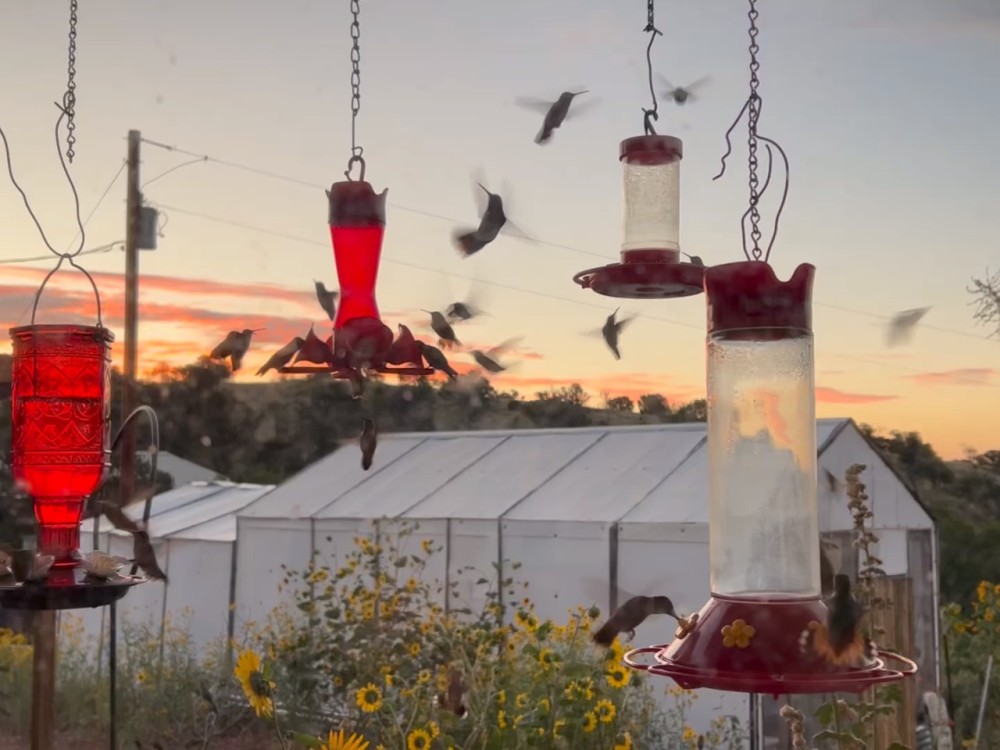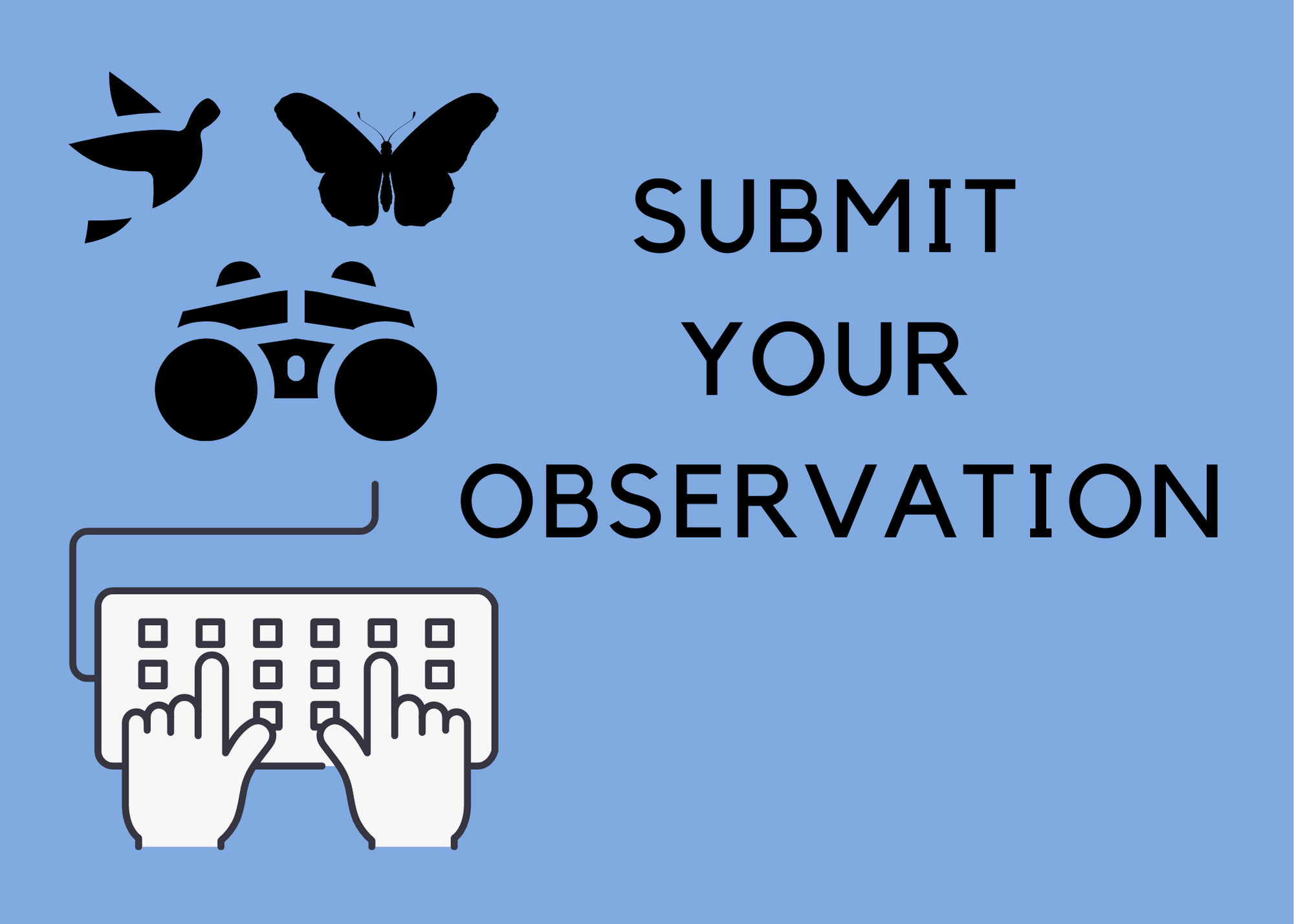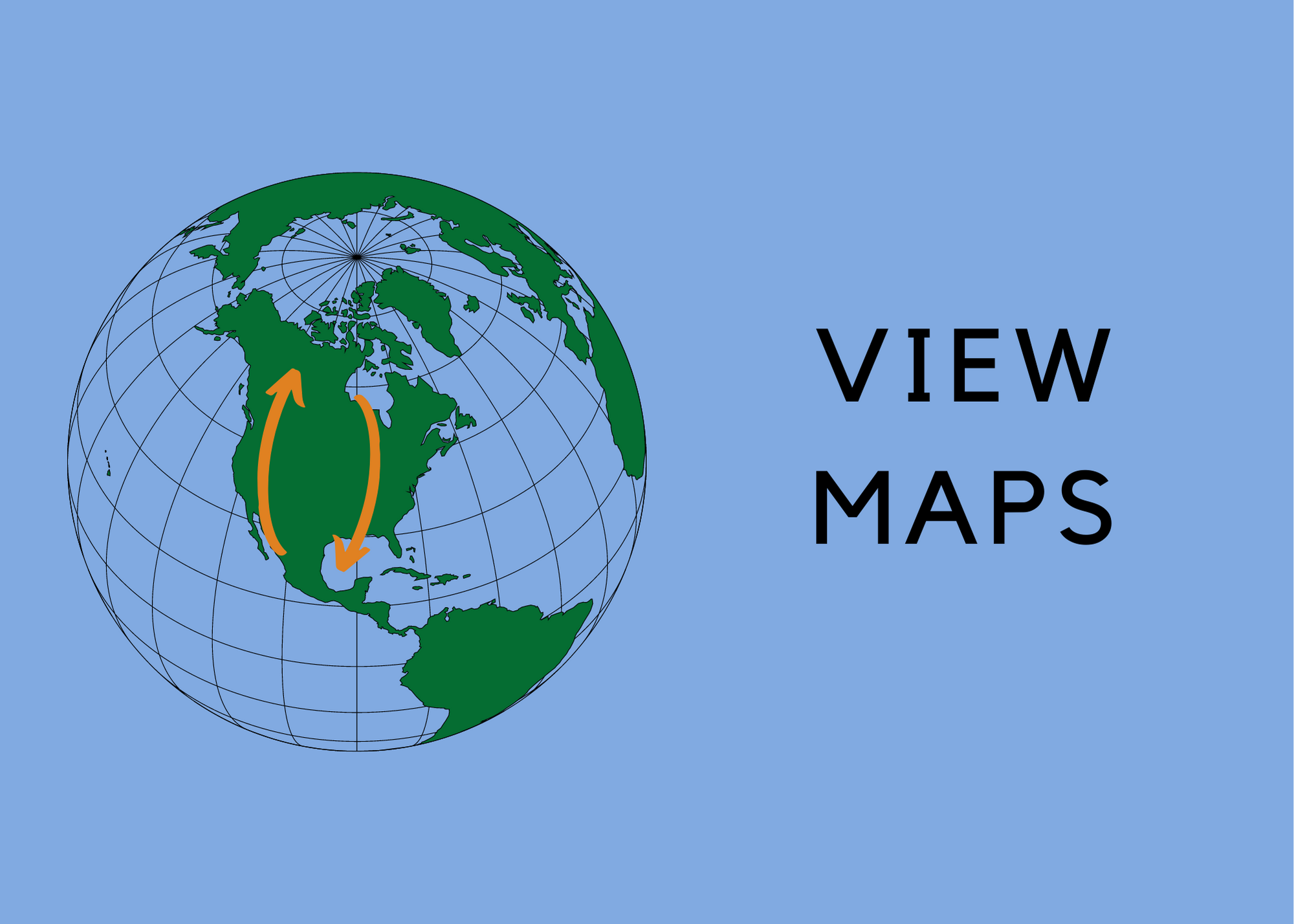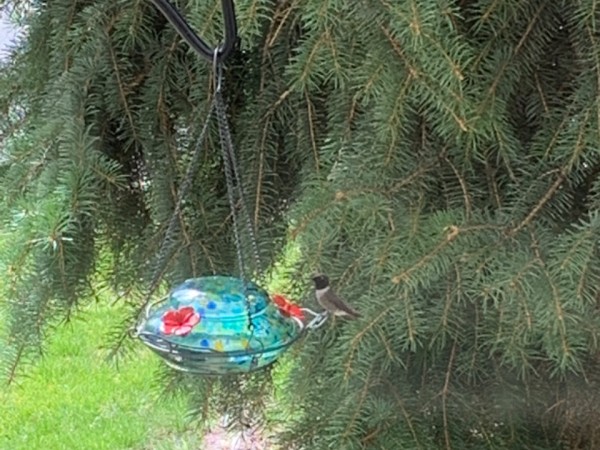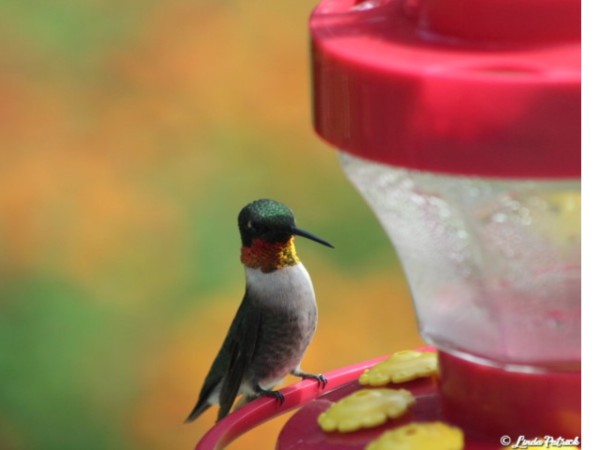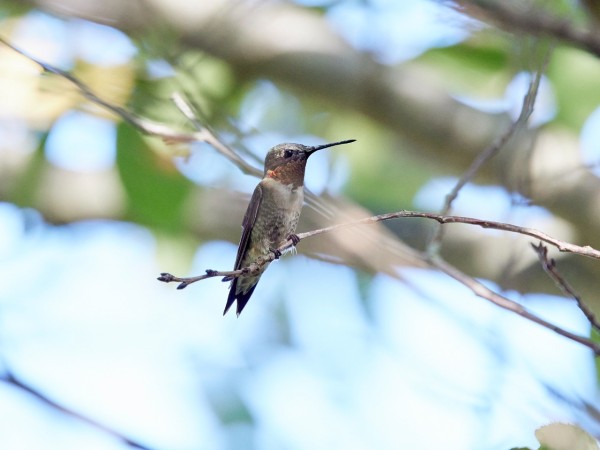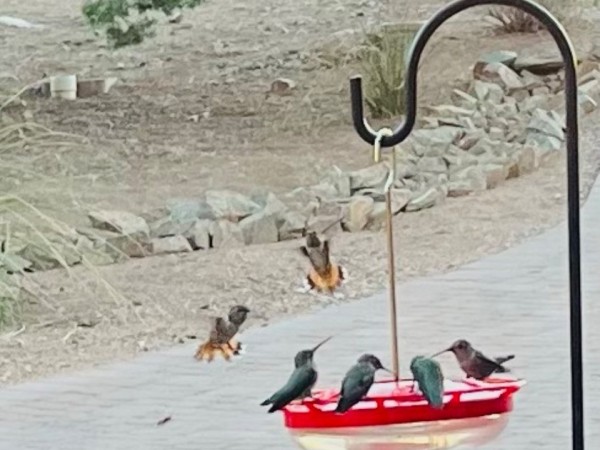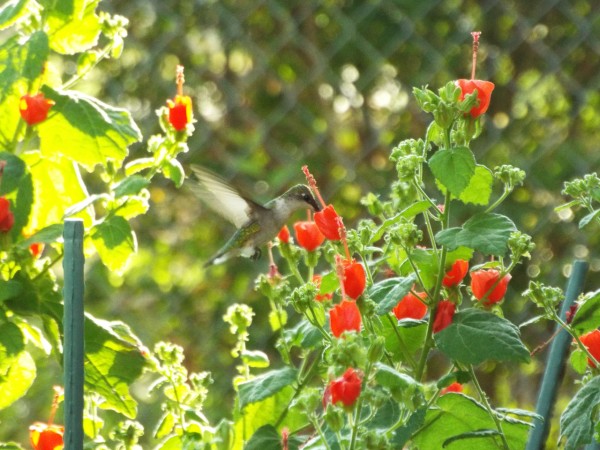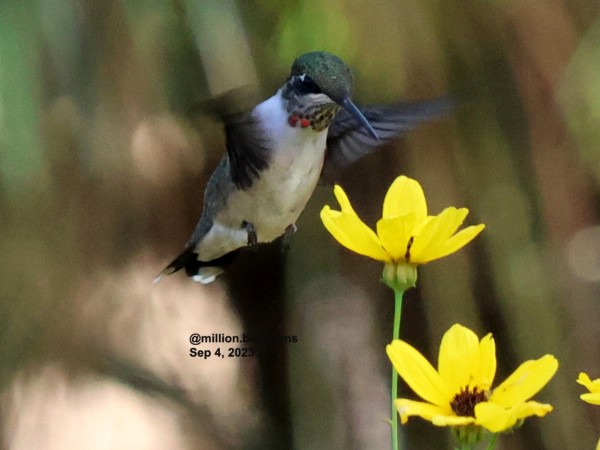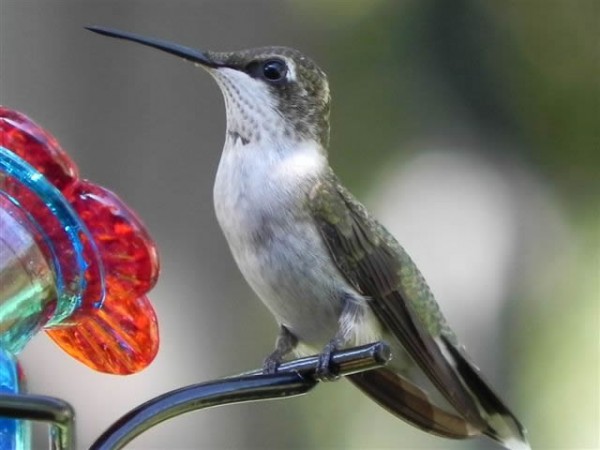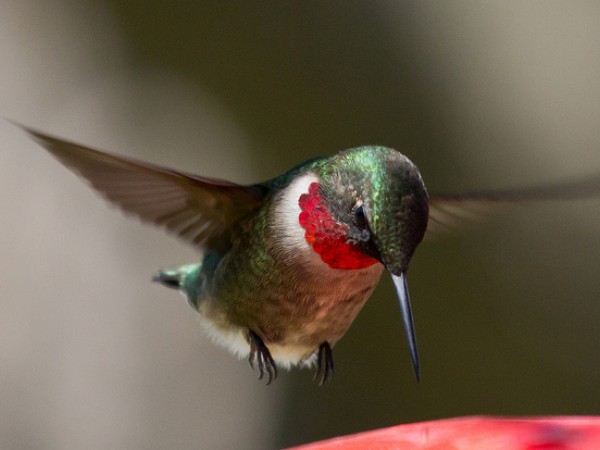Fueling Up for the Big Trip
Males on the Move
Male hummingbirds migrate first, followed by females and juveniles. Early male departure is actually beneficial to females and juveniles: with males gone, females and juveniles can feed without competing for food with the larger, more territorial males. This allows juveniles to prepare for migration. Newly-fledged birds need the time to mature and gain fat reserves before flying off on their first migration south.
You can report males under the category Hummingbird Sighting (Adult Male). We are hoping for more reports of adult males to better determine “last seen” dates. As fall migration progresses, these reports will drop-off.
Sandi in Arvada, CO: "Still here! Adult male black chinned. He has been frequenting the feeder a bit more often this past week. He wouldn’t come to the feeder when I was outside. As soon as I came in, there he is! Please excuse the blinds framing the shot." (09/02/2023)
Linda in Chatham, ON: "This male visited our feeder quite a few times today. Waystation #13039" (09/02/2023)
Judith in Westminster, MD: "Two adult males were guarding two different feeders this morning. . .This one was in the canopy of a cherry tree watching over a feeder below." (09/05/2023)
Fueling up
In addition to male hummingbirds, Journey North volunteers are also noting a surge of feeding activity. Watch hummingbirds go on feeding frenzies before leaving breeding grounds. They will feed often and intensely for days in a state called hyperphagia. Hummingbirds start feeding as early as forty-five minutes before sunrise and keep eating until dusk. Fueled by the nectar, they double their weight as they prepare to fly hundreds or even thousands of miles.
Susan in Paulden, AZ: "Over the past 3 weeks we have been inundated! We have 5 feeders up, they all look like this, and I'm going thru 2 quarts of nectar in an 24 hour period. Three species including rufous and they are finally all feeding together!" (08/20/2023)
Jypsi in Crittenden, KY: "The battles have really heated up over the flowers on my deck in past couple of days. The 2 adult males I’ve been used to seeing mostly in the morning are much more aggressive buzzing the feeders and flowers from dawn until dusk. . . I’ve only ever seen 1 bird nectaring from each feeder at a time. None linger or perch to drink now. It’s all quick sips during the chase." (09/02/2023)
Nectar Sources: Late Summer and Early Fall
While on migration, hummingbirds need a steady supply of food to fuel their flight. Finding nectar sources can mean the difference between life and death.
Barbara in Irving, TX: ". . . My three hummers are busy bodies, chasing each other all about the yard. . . Flowers available for them are: Two separate plots with Turks Cap Flowers, the Turks Caps on the side of my house have been there forever and give them plenty of sweet nectar, got two areas with Tall Mexican Petunias, one in the back yard and one in the front yard, hanging basket with red Petunias and Pentas in a plant stand, Rose Mallow and Garden Phlox. I do have a huge Crape Myrtle in my front yard full of flowers." (09/04/2023)
from Million Blossoms Garden in Carmel Hamlet, NY: "Rubythroated Hummingbird on Coreopsis tripteris, a giant Prairie Plant. Chelone glabra, Sedum, Vitex, New York asters have started blooming. Fall blooming Salvias - Salvia x Waverly, Salvia leucantha may open in 3-4 days. GH plants visited by Hummingbirds - Plectranthus ecklonii, Justicia varieties, Aloe, Bromeliads, Scrophularia macrantha, Russelia, Lantana, Dicliptera suberecta, Portulaca, Phygellius, Anisodontea and Pavonia multiflora" (09/05/2023)
Here are some steps you can take to help hummingbirds during their fall migration:
- Continue to maintain hummingbird feeders until temperatures consistently drop below freezing.
- Continue to nurture pollinator gardens. Next year, consider planting brightly-colored native flowers with long tube shapes. Remember hummingbirds are attracted to bright colors, not smell. Follow this link for a few planting suggestions: Photo Gallery of Fall Nectar Sources.
- Support the preservation and restoration of native habitats that are favorable to both migratory and resident birds.
Report Your Observations
When you observe hummingbirds, we want to know. Species tracked include Ruby-throated, Rufous, Broad-tailed, Black-chinned, Allen’s, Costa’s, Calliope, and Anna’s. Photos are always welcome and provide a voucher for your observation.

